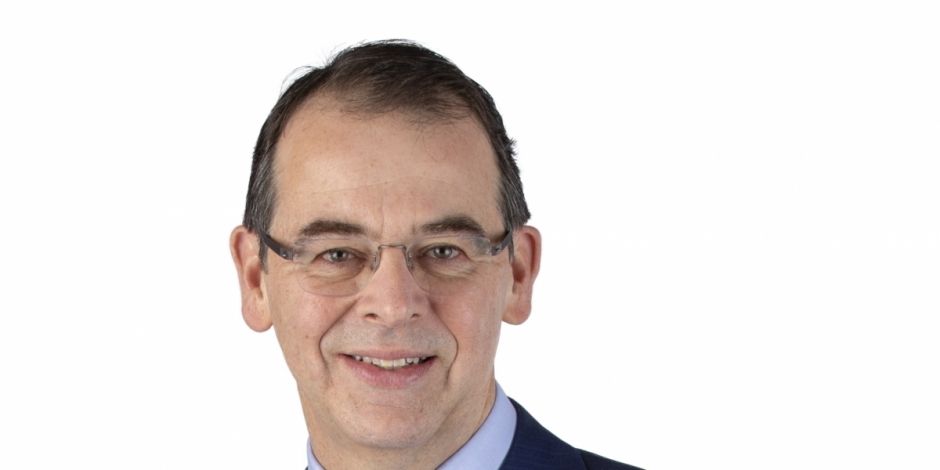
Janus Henderson Investors: Viral panic – but what is the endgame?
What started as a coronavirus-led de-risking of equity portfolios has mutated into a broad-based, multi-asset liquidation.
17.03.2020 | 15:15 Uhr
Paul O’Connor, Head of Multi-Asset at Janus Henderson Investors
The past three weeks has seen one of the fastest and gloomiest reappraisals of equity fundamentals of all time. The collapse in global stock markets has been the quickest-ever plunge from a market peak into a bear market. Yesterday, the Nasdaq Composite Index had its worst day ever and the S&P 500 recorded its biggest daily drop since the crash of 1987. Many measures of equity market volatility have surged above levels last seen during the global financial crisis.
The worst week ever
Fixed income markets have offered no refuge during the last phase of the sell-off. Most government bond markets delivered negative returns last week, failing to provide their usual risk-hedging characteristics. US long bonds have just experienced their most volatile 10-day period ever. Things have been just as turbulent in other hitherto-defensive assets, with investment grade corporate bonds experiencing their worst week in the 20-year life of the major indices and gold delivering its worst weekly performance since 1983.
Last week’s oil shock jolted the global market sell-off into a dangerous new phase. Before this, investors were largely focused on evaluating the impact of COVID-19 on global growth, with attention focused mostly on commodities and stocks. The plunge in oil prices added a new impulse of volatility and uncertainty to already-fragile markets, initiating a more urgent and broader de-risking. The mood shifted to panic as investors found themselves rushing for the same exits at the same time, triggering a self-reinforcing spiral of surging volatility and frantic position liquidation in most major assets.
The
market rout has purged optimism and leveraged risk-taking from most
asset classes. Systematic investors such as trend-followers and
risk-parity funds have unwound huge long positions in both equities and
fixed income. Looking more broadly across all investor types, we see
most measures of consensus positioning and sentiment now close to levels
last seen in 2008/09, during the global financial crisis. The majority
of positioning and sentiment indicators are now at levels from which
contrarian investing has typically been well rewarded.
Recession now priced in
The scale of the pullback in equities and spread-widening in corporate
bonds are consistent with financial markets having now more or less
priced in a typical recession. However, while this shift towards more
cautious asset pricing is a necessary condition for a market bottom in
risk assets, it is not a sufficient one. The missing fundamental
ingredient for a sustainable recovery in risk appetite is some evidence
that the growth of global COVID-19 infection rates is peaking. Cleary,
we are not there yet.
The rapid growth in daily coronavirus infection rates in the US and in
many major European countries over the past couple of weeks has been
very troubling. However, behind the gloomy headlines we can find some
signs of encouragement, such as the slowing growth rate in daily new
cases in China and South Korea. Even in Italy, the country that has seen
the greatest pressure on its healthcare system so far, the daily growth
of new infections has been trending lower for a month. However, the
Italian daily growth rate is still in the mid-teens, which is
uncomfortably high; with infection rates still accelerating in many
major countries, broader evidence of containment will be needed to
extinguish some of the more ominous, yet plausible coronavirus
scenarios.
Of course, in recent days we have seen a number of attempts by global
policymakers to ease the financial and economic tensions associated with
COVID-19 disruptions. Efforts so far have had very little impact on
market sentiment. The 12% drop in the S&P 500 the day after the US
Federal Reserve cut interest rates to zero says it all. Central banks
are by no means out of ammunition, but they certainly do not have as
much scope to revive market sentiment as they had during market
sell-offs in the past.
No game changer
We agree with the consensus view that fiscal solutions are now needed. A
range of targeted measures such as credit guarantees, wage subsidies,
tax holidays and direct payments to households have been announced in
many countries recently, but the overall fiscal impact of these has been
fairly modest, so far. While measures like this have a useful role to
play in addressing specific tensions, a much bigger fiscal thrust will
be required for policymakers to have a sizeable impact on broader
economic and market sentiment.
In the absence of any game-changing policy interventions, market
sentiment looks set to remain hostage to perceptions of global trends in
the coronavirus infection rate. Although many worrying potential
outcomes still loom, it is worth noting that there is a wide range of
views among the scientific community about the COVID-19 endgame. While
the headlines will inevitably remain filled with the most dramatic
coronavirus stories, it is important to also keep sight of the quiet
positive progress that is being made on containment in some countries.
With so much pessimism now embedded in asset prices, we believe that
gradually rebuilding market exposures into dips will be rewarded in all
but the most adverse coronavirus outcomes. We approach these turbulent
markets cautiously and probabilistically, but optimistically.
History tells us that shakeouts of leveraged positions in financial
markets often create attractive opportunities for investors with longer
time horizons. We would note that market moves this year so far would
have shifted the weights of a representative 60-40% equity-bond
portfolio to something closer to a 52-48% split. Investors will have
some sizeable rebalancing trades to do, once confidence does return to
financial markets.




Diesen Beitrag teilen: